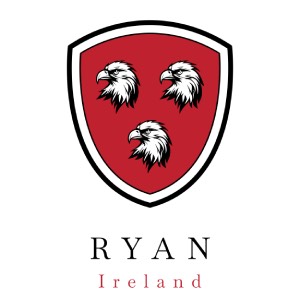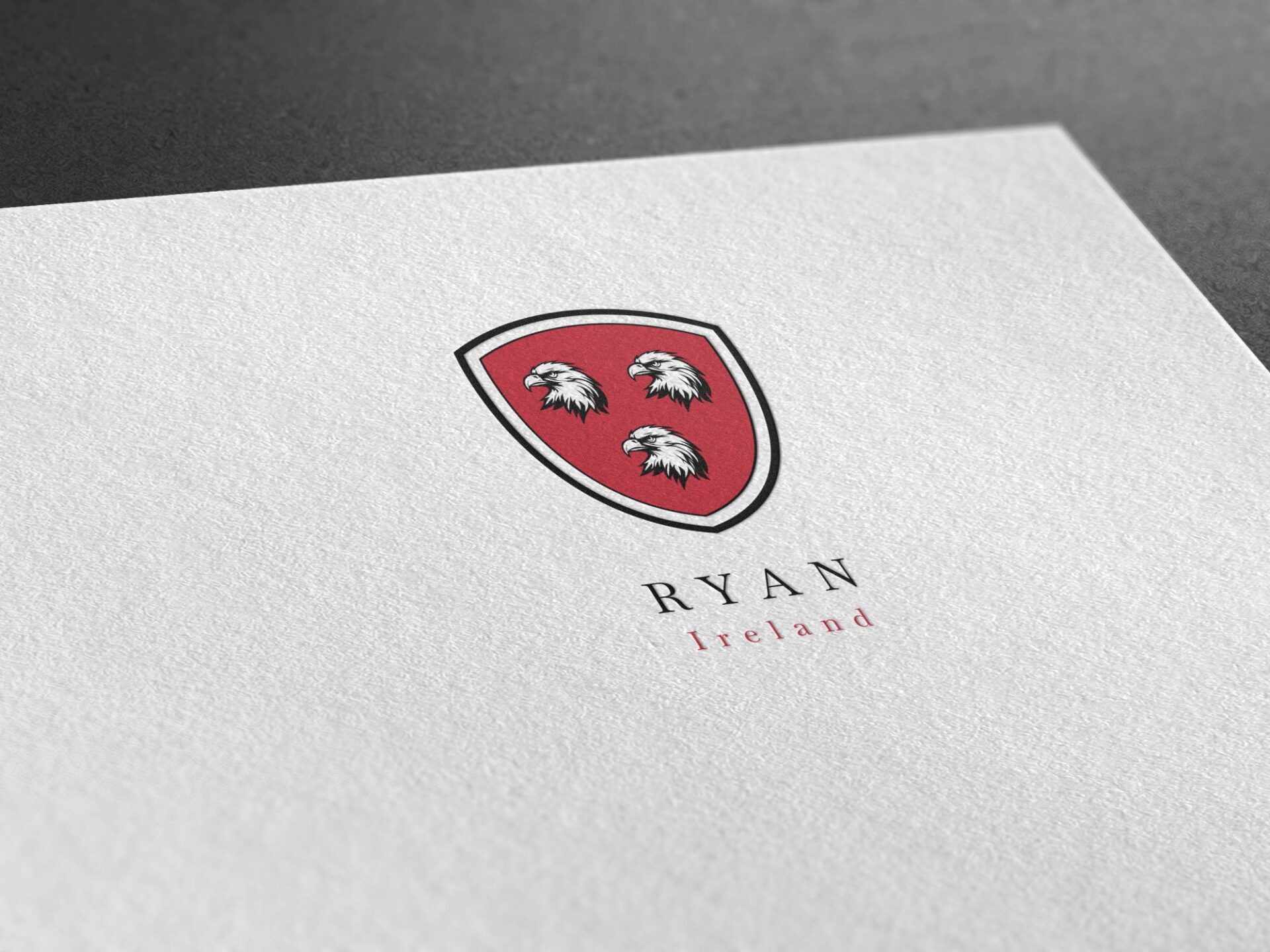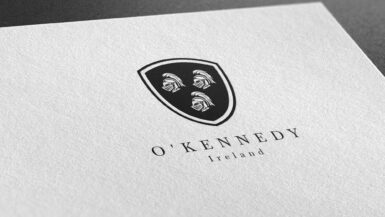Origin of the Surname
The Ryan surname is of Irish origin, deriving from the Gaelic name “Ó Riain.” The prefix “Ó” denotes “grandson of” or “descendant of,” highlighting the patronymic nature of the surname.
Etymology and Meaning
The name “Ó Riain” translates to “descendant of Rian.” Rian is believed to be a diminutive form of the old Gaelic word “rí,” meaning “king,” thus giving the name the meaning “little king” or “illustrious.”
Earliest Known Usage
The Ryan surname traces its origins back to the ancient Gaelic septs (clans) and was first recorded in the 10th century in County Tipperary. The earliest known Ryan is likely to be the son or grandson of a person named Rian who lived during this period.
Geographic Distribution
Traditionally, the Ryan family was a powerful sept in the Kingdom of Thomond, an ancient Irish kingdom now part of County Clare. From here, the family expanded into neighboring counties, particularly Tipperary and Limerick, where the surname remains common today.
Original Geographic Location
The original geographic location of the Ryan family is believed to be the region of Owney, which straddles the boundary between the modern counties of Tipperary and Limerick. This area was part of the Kingdom of Thomond.
Migration Patterns
During the 17th and 18th centuries, many Ryans were dispossessed of their lands and, as a result, migrated to other parts of Ireland and the world. The Great Famine of the 19th century further accelerated this migration, with many Ryans emigrating to the United States, Canada, Australia, and the United Kingdom.
Historical Context
Notable Historical Events
The Ryan family has a long history of involvement in Irish politics and rebellion. James Ryan, for example, was a prominent member of the 1916 Easter Rising and later served in the Irish government.
Involvement in Key Moments in History
John Ryan was a noted patriot during the American Revolution, and his descendants have continued to play important roles in American politics and society. In Australia, the Ryans were among the early settlers and made significant contributions to the development of Queensland.
Notable Bearers of the Surname
Famous Individuals
Many notable figures bear the Ryan surname. For example, Paul Ryan, a prominent American politician, served as the Speaker of the U.S. House of Representatives. In the realm of entertainment, Meg Ryan and Ryan Gosling are internationally recognized actors.
Influential Figures
Historically, John D. Ryan was an influential American businessman who left a significant mark on the mining industry. In the world of sports, Nolan Ryan, an American former Major League Baseball (MLB) pitcher, is considered one of the greatest players of all time.
Variations of the Surname
Spelling Variations
Like many Irish surnames, Ryan has undergone various spelling changes over the years. Some of the common variations include O’Ryan, Ryane, and Ryen.
Regional Differences
The spelling of the surname can also vary by region due to different linguistic influences. For example, the Welsh version of Ryan is Rhian, while in Scotland, it is often spelled as Rian.
Current Statistics and Distribution
Frequency and Global Distribution
Today, Ryan is one of the most common surnames in Ireland, ranking fourth in the country. It is also widespread in countries with significant Irish diaspora, such as the United States, the United Kingdom, Canada, and Australia.
Changes Over Time
Despite its spread worldwide, the concentration of the Ryan surname remains highest in Ireland, particularly in the counties of Tipperary and Limerick. Over time, the distribution of the Ryan surname in other countries has also increased due to continued immigration and the growth of the Irish diaspora.
Family Coat of Arms

The Ryan family crest is a bold and symbolically rich heraldic emblem that encapsulates the family’s storied heritage and values. The crest features a red background, known in heraldry as gules, which traditionally symbolizes warrior-like qualities such as bravery, strength, and valor. This vibrant and intense color sets a powerful tone for the crest, highlighting the family’s courageous and spirited nature.
Prominently displayed on the crest are three eagle heads, rendered in black and white. Eagles are highly significant in heraldry, symbolizing keen insight, high aspirations, and the power of judgment. The use of black (sable) and white (argent) adds layers of meaning; black often represents constancy and grief, while white symbolizes purity, peace, and sincerity. The combination suggests a balance of wisdom and resilience, indicating that the Ryan family possesses both a profound moral fortitude and the ability to endure through challenges.
The presence of three eagle heads can signify the importance of seeing beyond the obvious, mastery over one’s fate, and spiritual growth. The number three is often associated with completeness and the unity of body, mind, and spirit, reinforcing the idea that the Ryan family is well-rounded and deeply connected to their core principles.
Together, the elements of the Ryan family crest — the red background and the three black and white eagle heads — create a striking visual narrative. This narrative highlights a legacy characterized by bravery, wisdom, and a noble spirit, portraying the Ryan family as both regal and profoundly principled. This crest not only celebrates the historical identity and achievements of the Ryan family but also serves as a proud emblem of their enduring values and the lofty aspirations they hold.






Leave a reply